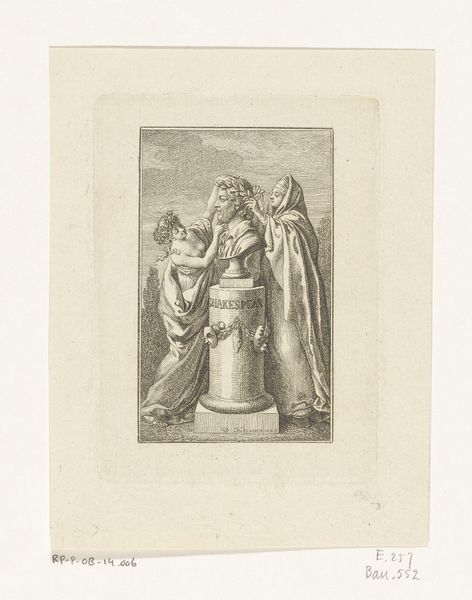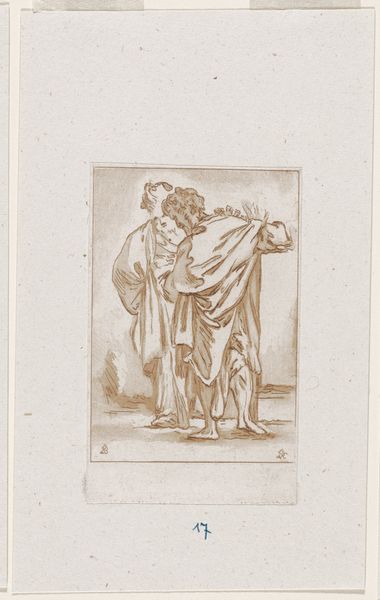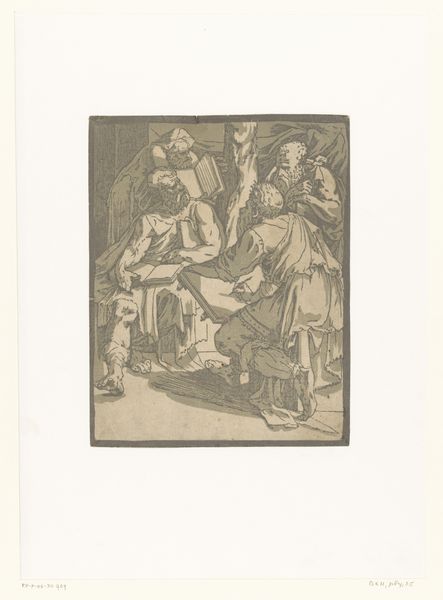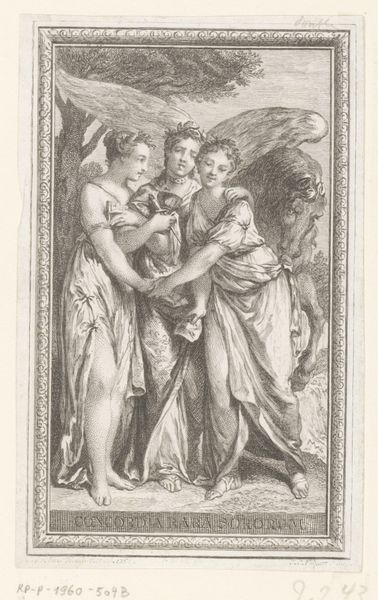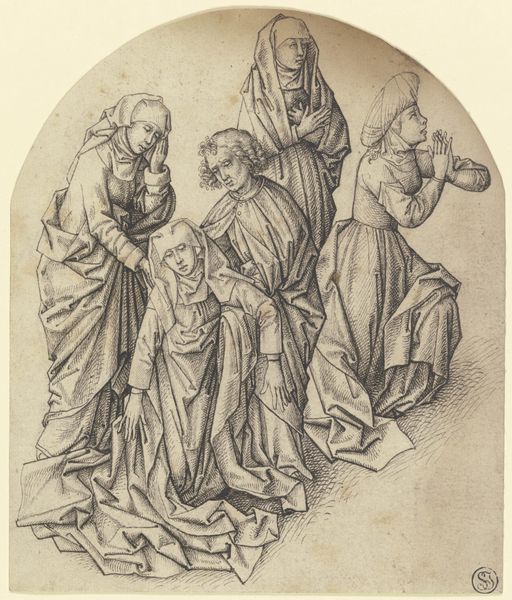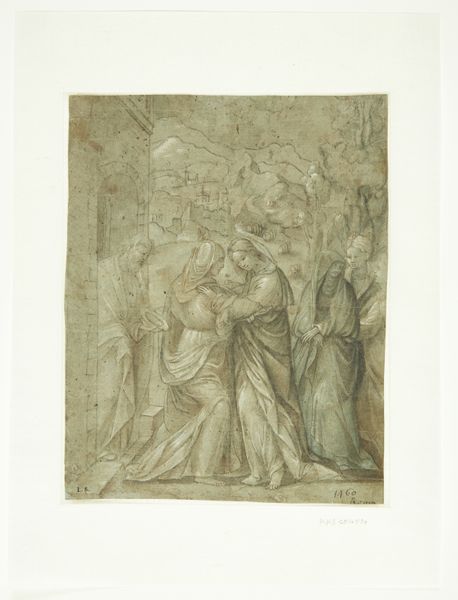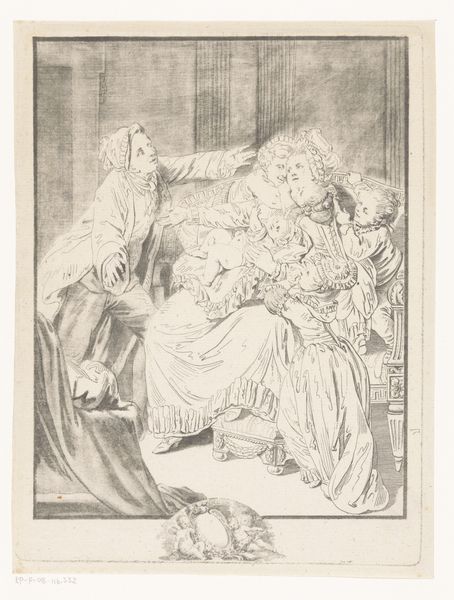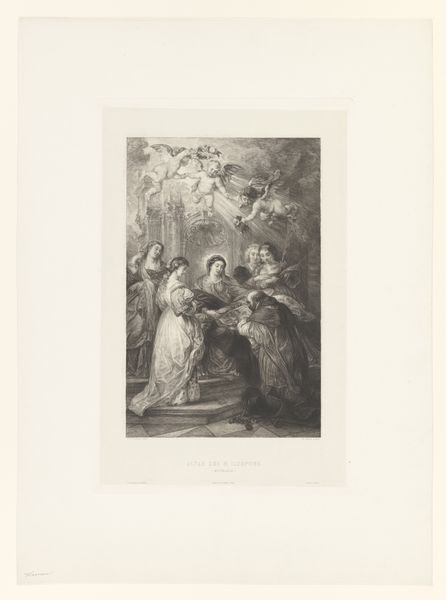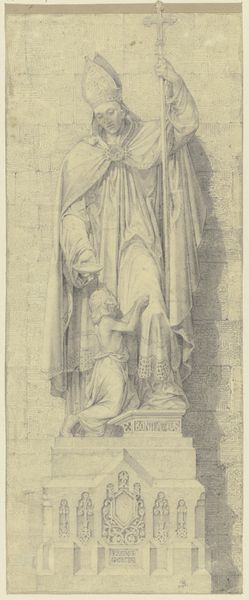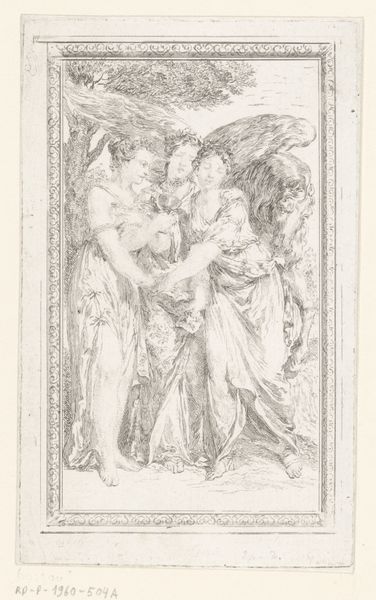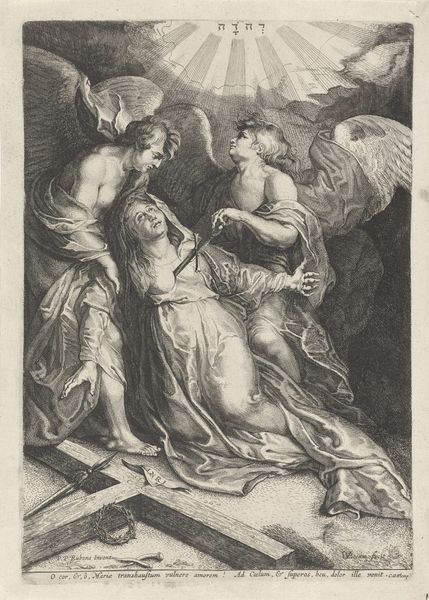
drawing, pencil
#
portrait
#
pencil drawn
#
drawing
#
pencil sketch
#
pencil drawing
#
pencil
#
genre-painting
#
rococo
Dimensions: height 280 mm, width 155 mm
Copyright: Rijks Museum: Open Domain
Editor: Here we have Claude Henri Watelet's "Vier staande vrouwen," a pencil drawing from 1760, currently at the Rijksmuseum. There's something so understated about it, so preparatory. What catches your eye about it? Curator: It's fascinating to consider the socio-economic context of this drawing. Pencil, as a material, gains prominence through industrialized production processes in the 18th century. What kind of labor was involved in acquiring the materials to make the pencil and paper? Editor: That's a great point. I hadn’t thought about the availability of even something as simple as a pencil. It seems ubiquitous now. Curator: Exactly! Was this pencil manufactured locally or imported? Who had access to this technology and the skill to manipulate this medium? We often divorce “high art” like drawing from questions of material access, but pencils, pigments, paper – these are all commodities. It shows the commodification of artistic production. Editor: So you’re seeing the drawing less as a window into Watelet’s artistic genius, and more as a material product reflecting broader economic shifts? Curator: Precisely. These women, seemingly suspended in quiet contemplation, are equally products of the drawing, as is the pencil itself. Their dress, seemingly flowing and elegant, are items of manufacture and commodity as well. What statements are made via the clothing the artist choses to capture? How does his medium create specific emphasis or convey certain aesthetic considerations regarding the texture, fall, and drape of those very same items? Editor: I see your point. I'll definitely look at art with a new set of questions now, thinking more about materials, manufacturing, and access! Curator: Likewise. It forces us to confront art's place within material reality rather than existing solely within an idealized realm.
Comments
No comments
Be the first to comment and join the conversation on the ultimate creative platform.
